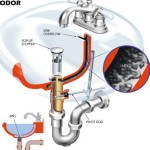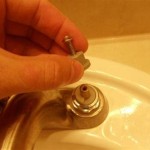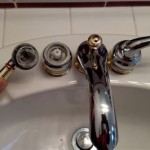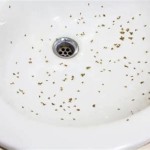Clean Out Bathroom Sink Drain: A Step-by-Step Guide
A slow-draining bathroom sink is a common annoyance, often caused by a buildup of hair, soap scum, and other debris. Thankfully, cleaning out a bathroom sink drain is a relatively simple task that can be accomplished with a few household items. This article provides a comprehensive guide on how to effectively clean out your bathroom sink drain, ensuring smooth water flow and a hygienic environment.
1. Gather Supplies
Before embarking on the cleaning process, gather the necessary supplies. These include:
- A bucket
- Rubber gloves
- A plunger
- A drain snake or wire coat hanger
- Baking soda
- White vinegar
- Boiling water
- Optional: Drain cleaner (chemical)
It is essential to wear rubber gloves to protect your hands from potential contaminants and to ensure proper hygiene.
2. Remove Visible Debris
Begin by removing any visible debris from the sink drain. This can include hair, soap scum, and other solid particles. A small tool, such as a pair of tweezers or a long-handled spoon, can be helpful for this step. Be sure to dispose of the collected debris properly to prevent clogging in other drains.
3. Plunge the Drain
After removing visible debris, use a plunger to dislodge any remaining blockage. Ensure the plunger fits snugly over the sink drain, creating a tight seal. Push and pull the plunger rapidly and forcefully several times, applying pressure to break up the blockage.
4. Use Baking Soda and Vinegar
If plunging the drain does not fully resolve the blockage, a combination of baking soda and vinegar can be used to break down organic matter and loosen debris. Pour a cup of baking soda down the drain, followed by a cup of white vinegar. The reaction between these two ingredients will create a fizzing action that helps break down the clog.
Allow the mixture to sit for at least 30 minutes, ideally for an hour. Then, pour boiling water down the drain to flush out the dissolved debris. This method is effective for organic clogs caused by hair, soap scum, and other biodegradable materials. However, it may not dislodge mineral deposits or other types of blockages.
5. Utilize a Drain Snake
For more stubborn clogs, a drain snake is a useful tool. A drain snake is a long, flexible cable with a hook or a spiral at the end. Insert the snake into the drain, carefully pushing it through the blockage. Rotate the handle to break up the clog and pull out the debris.
If a drain snake is unavailable, a straightened wire coat hanger can be used as a substitute. However, it may not be as effective and can potentially damage the pipes if used improperly.
6. Consider Using Chemical Drain Cleaner
In some cases, chemical drain cleaners can be used to dissolve clogs. However, these cleaners are highly corrosive and should be used with extreme caution. They require careful reading and adherence to the manufacturer's instructions. It is important to note that chemical drain cleaners can damage pipes and should be used as a last resort.
7. Prevent Future Clogs
To prevent future clogging, it is crucial to implement preventive measures. This includes:
- Install a drain strainer to catch hair and other debris.
- Clean the drain strainer regularly.
- Avoid pouring grease or oil down the drain.
- Flush the drain with hot water after each use to prevent buildup.
By following these tips, you can significantly reduce the likelihood of future clogs and maintain a clean and functional bathroom sink.

5 Natural Ways To Unclog A Bathroom Sink Hiller How

How To Unclog A Bathroom Sink Hana S Happy Home

Best Ways To Clean Your Bathroom Sink Drain Yourself

Replace A Trap And Add Cleanout Fine Homebuilding

3 Ways To Clean A Bathroom Sink Drain Wikihow

How Often Should I Clean My Drains At Home

How To Clean A Clogged Sink Remove Stopper

How To Unclog A Bathroom Sink Hana S Happy Home

How To Clean Out A Sink Trap Bailey Brothers Plumbing

5 Homemade Drain Cleaners That Are Safe For Your Plumbing System Gold Star Heating Cooling
Related Posts







